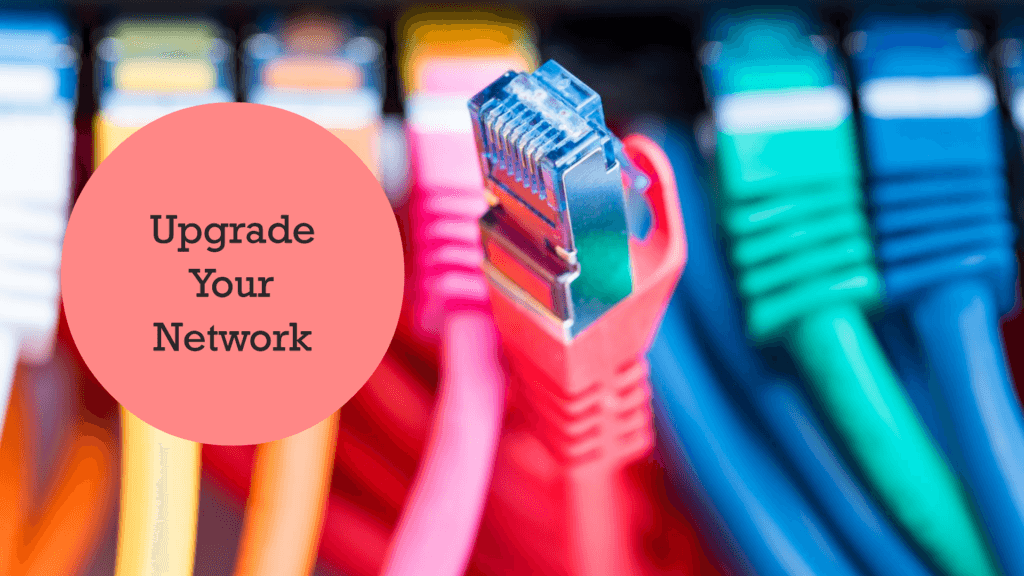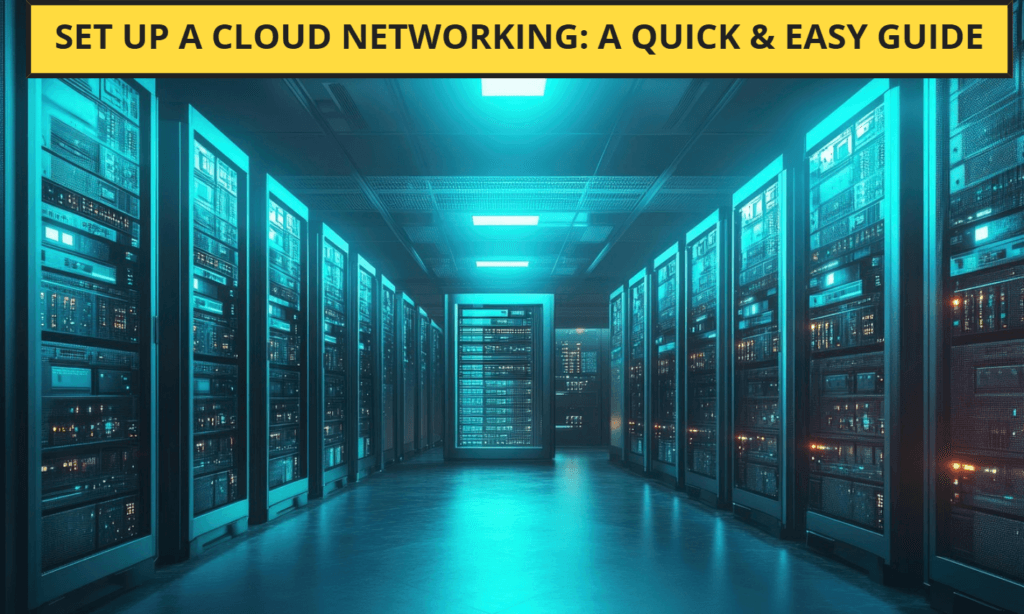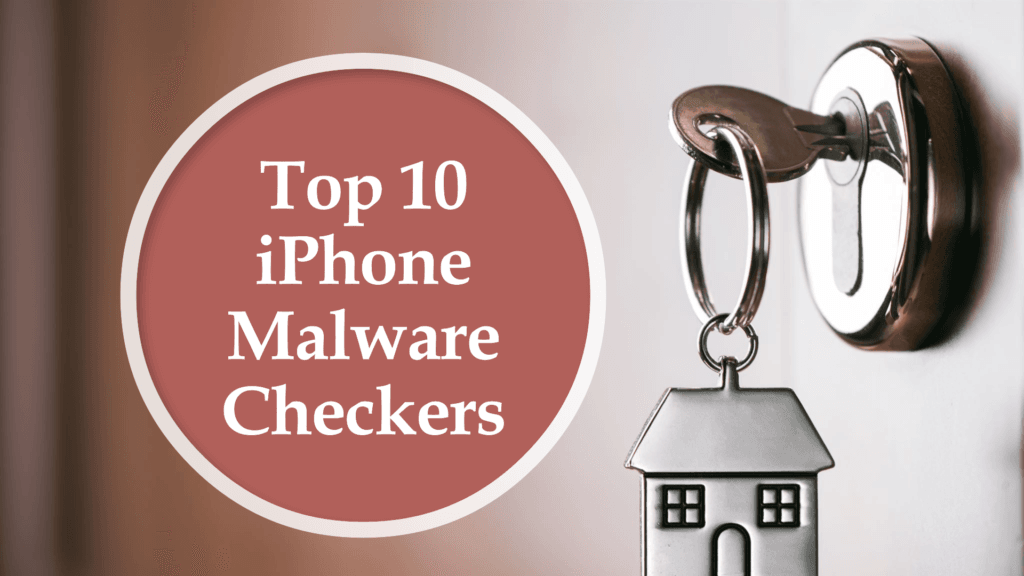Technology Moment Unleashing the Power of Cat 8 Ethernet Cable. In an age where connectivity and speed are paramount, the evolution of network cables has played a pivotal role in shaping our digital landscape. Enter the Cat 8 Ethernet cable—a ground breaking leap in wired network technology that promises to redefine how we experience data transfer. With the capacity to support lightning-fast speeds and unparalleled bandwidth, Cat 8 cables are not just an upgrade; they are a revolution in the making. Join us as we delve into the remarkable capabilities and potential of Cat 8 Ethernet cables, exploring how they are set to transform our digital interactions and elevate our connectivity to new heights.
What is an Ethernet Cable?
Ethernet cables are the lifeline of wired networking, acting as the physical connections that enable devices to communicate over a local area network (LAN). These cables are used to connect computers, routers, switches, and other network devices, allowing them to share data efficiently and reliably. Ethernet cables come in various categories, each defined by different performance standards and capabilities, such as data transfer speeds and bandwidth.
In a world dominated by wireless technology, Ethernet cables still hold a crucial role, particularly in environments where stability and speed are paramount. They provide a more consistent and often faster connection compared to wireless alternatives, making them indispensable for activities that demand high data rates and low latency, such as gaming, streaming, and large file transfers.
The journey of Ethernet cables began in the 1970s when Robert Metcalfe and his team at Xerox developed the first Ethernet standard. This initial version of Ethernet could transmit data at a rate of 2.94 megabits per second (Mbps). Since then, Ethernet technology has undergone significant advancements, leading to the development of various cable categories, each offering improved speed and performance.
In the early days, Ethernet cables were primarily used in business and academic settings. The introduction of Category 3 (Cat 3) cables in the 1990s allowed Ethernet to become more widespread, supporting speeds up to 10 Mbps. As technology progressed, so did the demand for faster and more reliable networking solutions. This led to the creation of Cat 5 cables, which could handle speeds up to 100 Mbps, and later Cat 5e, which increased the maximum speed to 1 gigabit per second (Gbps).
The 2000s saw the introduction of Cat 6 and Cat 6a cables, which further pushed the boundaries of Ethernet performance with speeds up to 10 Gbps. Cat 7 cables were developed to provide even higher speeds and better shielding, capable of supporting up to 10 Gbps over longer distances. Each new category brought enhancements in shielding, reduced interference, and higher frequencies, meeting the growing needs of modern networking environments.
Now, with the emergence of Cat 8 Ethernet cables, we are entering a new era of ultra-fast networking. Designed to support speeds up to 40 Gbps and frequencies up to 2000 MHz, Cat 8 cables are set to revolutionize the way we think about wired connectivity. These cables are particularly well-suited for data centers, enterprise environments, and high-performance home networks, ensuring that our networks are ready for the demands of the future.
Table of Contents
What is a Cat 8 Ethernet Cable?
Cat 8 Ethernet cable, also known as Category 8, represents the latest and most advanced standard in Ethernet cabling. Designed to support extremely high-speed data transfer, Cat 8 cables are a significant upgrade from their predecessors, offering improved performance and reliability for modern networking needs.
Definition and Specifications
Cat 8 Ethernet cable is a high-performance twisted pair cable that adheres to the IEEE 802.3bq standard, specifically designed for data transmission at speeds up to 40 Gbps (gigabits per second). This is a massive leap from the Cat 7 cables, which support speeds up to 10 Gbps. Cat 8 cables operate at a frequency of up to 2000 MHz, providing superior bandwidth capabilities and ensuring faster and more stable data transmission.
Comparison with Previous Ethernet Categories
To fully appreciate the advancements Cat 8 brings, it’s useful to compare it with previous Ethernet cable categories:
- Cat 5e: Supports speeds up to 1 Gbps and a frequency of 100 MHz.
- Cat 6: Supports speeds up to 1 Gbps at 100 meters and 10 Gbps at 55 meters, with a frequency of 250 MHz.
- Cat 6a: Enhanced version of Cat 6, supporting 10 Gbps speeds at 100 meters and a frequency of 500 MHz.
- Cat 7: Supports speeds up to 10 Gbps and a frequency of 600 MHz. Features improved shielding compared to Cat 6 and Cat 6a.
Cat 8 stands out by offering significantly higher speeds and frequencies than any of these previous categories, making it the optimal choice for demanding applications such as data centers, high-performance computing, and advanced gaming setups.
Technical Characteristics
Cat 8 cables feature superior shielding, known as S/FTP (Shielded/Foiled Twisted Pair), which helps in reducing crosstalk and electromagnetic interference (EMI). This robust shielding ensures that data transmission remains reliable and stable even in environments with high electrical interference.
Applications and Future-Proofing
Given its high-speed capabilities and robust construction, Cat 8 Ethernet cable is ideal for environments requiring rapid data transfer and low latency. This includes data centers, server farms, and high-end residential setups, particularly those involving 4K/8K streaming or online gaming.
Technical Specifications of Cat 8 Ethernet Cable
Cat 8 Ethernet cables are the latest advancement in network cabling technology, bringing impressive technical specifications that set them apart from their predecessors. Let’s dive into the details:

Speed and Bandwidth
One of the most significant advancements of Cat 8 cables is their remarkable speed and bandwidth capabilities. These cables support data transmission speeds of up to 40 Gbps (gigabits per second), which is a substantial leap compared to earlier Ethernet categories. This makes Cat 8 cables ideal for high-speed data transfer, enabling faster uploads and downloads, seamless video streaming, and reduced latency in online gaming.
Frequency
Cat 8 Ethernet cables operate at a frequency of up to 2000 MHz (megahertz). This high frequency allows for more data to be transmitted over the cable at any given time, which translates to faster and more efficient network performance. The increased frequency also helps in minimizing interference and crosstalk, ensuring a cleaner and more stable connection.
Shielding and Construction
To handle such high speeds and frequencies, Cat 8 cables are designed with superior shielding and construction. They typically feature:
- Shielded Twisted Pair (STP) Design: Each pair of wires within the cable is individually shielded with foil, and the overall cable is further shielded with a braided or foil outer layer. This double shielding provides excellent protection against electromagnetic interference (EMI) and crosstalk from neighboring cables and devices.
- High-Quality Materials: Cat 8 cables are constructed using high-quality copper conductors and durable insulation materials, ensuring optimal performance and longevity.
- Thicker Gauge Wires: The wires inside Cat 8 cables are often thicker compared to those in lower-category cables, which helps in maintaining signal integrity over longer distances.
Connector Types
Cat 8 Ethernet cables use standard RJ45 connectors, which are backward compatible with previous Ethernet categories. This makes it easy to upgrade your network without needing to replace all your existing hardware. The connectors are also designed to handle the high speeds and frequencies of Cat 8, ensuring a secure and reliable connection.
Maximum Cable Length
Due to the high-speed data transmission capabilities, Cat 8 cables have a maximum length limitation of 30 meters (about 98 feet) for their optimal performance. This is shorter than lower-category cables, but it is sufficient for most home and office networking setups. For longer distances, network administrators might need to use repeaters or switches to maintain signal quality.
Benefits of Using Cat 8 Ethernet Cable
The Cat 8 Ethernet cable, being the latest advancement in the realm of wired networking, comes packed with several compelling benefits. Let’s delve into the key advantages that make Cat 8 a noteworthy upgrade for various networking needs.
1. Enhanced Speed and Performance: One of the most significant benefits of the Cat 8 Ethernet cable is its impressive speed and performance. It supports data transmission speeds of up to 40 Gbps (gigabits per second). This is a substantial leap compared to previous cable categories, such as Cat 6A, which supports up to 10 Gbps, or Cat 5E, which maxes out at 1 Gbps. This high-speed capability is crucial for applications requiring rapid data transfer, such as large-scale data centers, high-definition video streaming, and online gaming. With Cat 8, you can expect smoother, faster, and more reliable network performance.
2. Improved Signal Quality : Cat 8 Ethernet cables come with enhanced shielding to minimize interference and crosstalk, which are common issues that can degrade signal quality. The improved shielding ensures that the data transmitted over the cable remains intact and experiences fewer interruptions. This is particularly important in environments with a lot of electronic devices or in industrial settings where electromagnetic interference (EMI) is prevalent. By maintaining higher signal integrity, Cat 8 cables help in delivering a more stable and consistent network connection.
3.Future-Proofing Your Network:
Investing in Cat 8 Ethernet cables is a strategic move for future-proofing your network. As technology continues to advance and the demand for higher data speeds and better performance increases, having a network infrastructure that can handle these advancements is crucial. Cat 8 cables are designed to meet the requirements of the next generation of networking technologies, ensuring that your setup remains relevant and efficient for years to come. This long-term viability makes Cat 8 an excellent choice for both residential and commercial applications.
4. Support for High-Bandwidth Applications: The high bandwidth capacity of Cat 8 cables, which can reach up to 2000 MHz, makes them ideal for bandwidth-intensive applications. This includes activities like 4K and 8K video streaming, virtual reality (VR) gaming, and large data file transfers. For businesses, this means more efficient handling of tasks such as video conferencing, cloud computing, and data backups. The ability to support such demanding applications without lag or latency issues is a significant advantage for both home users and businesses.
5. Reduced Latency: Latency is a critical factor in networking, especially for real-time applications like online gaming, video conferencing, and VoIP (Voice over Internet Protocol) calls. Cat 8 cables are designed to reduce latency significantly compared to their predecessors. Lower latency translates to quicker response times and a more seamless experience, which is essential for activities where timing and quick data transmission are crucial.
6. Compatibility with Existing Infrastructure: While Cat 8 cables are designed for high-performance networks, they are also backward compatible with previous Ethernet standards. This means you can integrate Cat 8 cables into an existing network setup without having to replace all your current hardware. This compatibility ensures a smooth transition to higher speeds and better performance without the need for a complete overhaul of your network infrastructure.
Cat 8 vs. Other Ethernet Cables
When considering upgrading to Cat 8 Ethernet cables, it’s essential to understand how they stack up against other commonly used Ethernet cable categories. Each category has unique features, performance capabilities, and use cases. Let’s delve into the differences between Cat 8 and its predecessors.
Cat 8 vs. Cat 7
Speed and Performance: Cat 8 cables offer a significant performance boost over Cat 7. While Cat 7 supports speeds up to 10 Gbps, Cat 8 can handle speeds up to 40 Gbps. This makes Cat 8 a clear choice for environments where high-speed data transfer is crucial, such as data centers.
Frequency: Cat 7 operates at a frequency of up to 600 MHz, whereas Cat 8 operates at a whopping 2000 MHz. The higher frequency of Cat 8 allows for faster data transmission and reduced latency.
Shielding: Both Cat 7 and Cat 8 cables are shielded, which helps in minimizing interference and crosstalk. However, Cat 8 cables typically use superior shielding techniques that provide better protection against interference, ensuring more stable and reliable connections.
Use Cases: Cat 7 is often used in smart homes and high-end residential networks. Cat 8, with its higher speed and improved shielding, is more suited for professional environments like data centers and enterprise networks where maximum performance is necessary.
Cat 8 vs. Cat 6A
Speed and Performance: Cat 6A cables support speeds up to 10 Gbps, similar to Cat 7, but they do so at a frequency of 500 MHz. In comparison, Cat 8’s 40 Gbps speed and 2000 MHz frequency make it the superior choice for tasks requiring the highest bandwidth.
Shielding: Cat 6A cables can be either shielded or unshielded. In contrast, Cat 8 cables are always shielded, which provides better protection against electromagnetic interference (EMI) and ensures consistent performance.
Distance Limitations: One drawback of Cat 8 is its shorter maximum distance for maintaining high performance. Cat 8 is rated for up to 30 meters for 40 Gbps speeds, while Cat 6A can maintain its 10 Gbps speed up to 100 meters. This makes Cat 6A more suitable for longer cable runs in office buildings or homes.
Use Cases: Cat 6A is a great option for standard office and residential networking needs, providing a balance of performance and distance. Cat 8, with its higher speeds, is better for short-distance, high-performance applications like server rooms and data centers.
Cat 8 vs. Cat 5E
Speed and Performance: Cat 5E (Enhanced) cables support speeds up to 1 Gbps at a frequency of 100 MHz. This is significantly lower than Cat 8’s 40 Gbps at 2000 MHz, making Cat 8 vastly superior for high-speed, data-intensive applications.
Shielding: Most Cat 5E cables are unshielded, which makes them more susceptible to interference and crosstalk compared to the fully shielded Cat 8 cables. This difference is crucial in environments with a lot of electronic interference or where maximum network reliability is needed.
Cost and Availability: Cat 5E cables are much cheaper and more widely available than Cat 8 cables. For basic home or small office networks, Cat 5E is often sufficient and more cost-effective. However, for future-proofing and achieving the highest possible speeds, investing in Cat 8 is worthwhile.
Use Cases: Cat 5E is suitable for standard home internet use, basic office networking, and small-scale applications. Cat 8, on the other hand, is designed for high-speed, high-performance environments like data centers, advanced gaming setups, and places where top-tier network performance is essential.
Applications of Cat 8 Ethernet Cable
Cat 8 Ethernet cables are the latest and most advanced option in the Ethernet family, designed to meet the needs of modern, high-speed networking environments. Their unique technical specifications and superior performance make them suitable for various applications. Let’s dive into the different scenarios where Cat 8 Ethernet cables excel.
Home Networking
As our homes become more connected with smart devices, the demand for a robust and high-speed network increases. Cat 8 Ethernet cables provide the necessary bandwidth and speed to support multiple devices simultaneously without lag or interference. Whether you’re streaming 4K videos, playing online games, or managing a smart home system, Cat 8 ensures a seamless and reliable connection.
Key Benefits for Home Use:
- High-Speed Internet: Ideal for households with high-speed internet plans, ensuring you get the full benefit of your ISP’s service.
- Stable Connections: Reduced latency and minimal interference mean more stable and reliable connections for all your devices.
- Future-Proofing: As new technologies emerge and internet speeds continue to increase, Cat 8 cables will remain relevant and efficient for years to come.
Data Centers
Data centers are the backbone of the digital world, housing servers and networking equipment that handle massive amounts of data every second. The efficiency and performance of these data centers are crucial, and Cat 8 Ethernet cables play a significant role in achieving optimal performance.
Key Benefits for Data Centers:
- High Bandwidth: Cat 8 cables support bandwidths up to 2000 MHz, allowing data centers to handle large volumes of data transfer efficiently.
- High Speed: With speeds up to 40 Gbps, Cat 8 cables ensure quick data transmission, which is essential for data center operations.
- Superior Shielding: The advanced shielding in Cat 8 cables reduces crosstalk and electromagnetic interference, which is critical in densely packed data center environments.
Gaming and Streaming
For gamers and streamers, network speed and stability are non-negotiable. A slight delay or lag can ruin a gaming session or cause buffering during a live stream. Cat 8 Ethernet cables provide the high-speed and low-latency connections required for a top-notch gaming and streaming experience.
Key Benefits for Gaming and Streaming:
- Low Latency: Cat 8 cables offer minimal delay, which is crucial for real-time gaming and streaming.
- Consistent Performance: The high-speed capabilities ensure that you can game or stream without interruptions, even during peak internet usage times.
- Improved Upload and Download Speeds: Faster data transfer rates mean quicker downloads and smoother uploads, essential for content creators and professional streamers.
Enterprise and Office Environments
Modern offices rely heavily on fast and reliable networks to support various applications, from video conferencing to cloud computing.
Key Benefits for Offices:
- Enhanced Productivity: Faster and more reliable connections lead to improved productivity and efficiency in the workplace.
- Supports High-Demand Applications: Whether it’s video conferencing, large file transfers, or cloud-based applications, Cat 8 cables handle high-demand applications effortlessly.
- Scalability: Cat 8 cables provide the scalability required to accommodate future growth.
Industrial Environments
Industrial environments often have unique networking requirements due to the presence of heavy machinery and large-scale operations. Cat 8 Ethernet cables, with their robust construction and superior shielding, are well-suited for these challenging conditions.
Key Benefits for Industrial Use:
- Durability: Cat 8 cables are designed to withstand harsh environments, making them suitable for industrial use.
- High Performance: The high-speed and low-latency characteristics of Cat 8 cables ensure efficient operations in industrial settings.
- Reduced Interference: Advanced shielding reduces electromagnetic interference from industrial equipment, maintaining network integrity.
Troubleshooting Common Issues
When it comes to Cat 8 Ethernet cables, users might encounter various issues that can affect their network’s performance. Here’s a detailed guide to troubleshooting some of the most common problems:

Connection Problems
- Loose Connections
- Symptoms: Intermittent connectivity, no connection.
- Solution: Ensure all cable connections are secure. Check that the RJ45 connectors are fully inserted into the ports on both the cable ends and the devices. Sometimes, gently pushing them in until you hear a click can resolve the issue.
- Faulty Cables
- Symptoms: No signal, poor performance.
- Solution: Test the cable with another device to see if the problem persists. If the issue is resolved with a different cable, the original one may be faulty. Replace it with a new Cat 8 cable.
- Port Issues
- Symptoms: One device not recognizing the cable, inconsistent connection.
- Solution: Test the port with a different cable and device. If the port fails to recognize multiple cables, it could be damaged. Try using a different port or seek professional repair.
Performance Issues
- Slow Speeds
- Symptoms: Reduced download/upload speeds, lag in data transfer.
- Solution: Verify that both connected devices (e.g., router and computer) support the high speeds offered by Cat 8 cables. Also, check your internet service plan to ensure it provides the bandwidth that matches the cable’s capacity. Updating firmware and drivers for network devices can also improve performance.
- Interference
- Symptoms: Fluctuating network speeds, signal loss.
- Solution: Ensure that the cable is properly shielded and not running alongside electrical cables or devices that could cause electromagnetic interference (EMI). Re-route the cable if necessary to avoid interference.
- Cable Length
- Symptoms: Degraded performance over long distances.
- Solution: Cat 8 cables are rated for optimal performance up to 30 meters (98 feet). If your setup exceeds this length, consider using network switches or repeaters to boost the signal.
Configuration Issues
- Incorrect Network Settings
- Symptoms: Inability to connect to the network, limited connectivity.
- Solution: Check the network settings on your devices to ensure they are correctly configured for the network. Verify IP address settings, subnet mask, and DNS settings.
- Firmware and Software
- Symptoms: Incompatibility, reduced performance.
- Solution: Keep the firmware of all networking devices (routers, switches) updated. Also, update the network drivers on your computers and other devices.
Hardware Compatibility
- Non-Compatible Devices
- Symptoms: Device does not recognize the cable, poor performance.
- Solution: Confirm that all devices connected via the Cat 8 cable support the high-speed specifications of Cat 8. Older devices may not fully utilize the capabilities of the cable.
- Adapter and Connector Issues
- Symptoms: Connection drops, no signal.
- Solution: Use high-quality adapters and connectors if needed. Ensure that any intermediary devices, like switches or hubs, are also rated for high-speed performance compatible with Cat 8 standards.
Environmental Factors
- Temperature and Physical Damage
- Symptoms: Intermittent connectivity, total connection loss.
- Solution: Ensure the cable is not exposed to extreme temperatures or physical damage (e.g., crushing, bending). Use protective conduits or cable management solutions to keep the cable safe from harm.
Conclusion: The Significance of Cat 8 Ethernet Cable
Summarizing Key Points : In the conclusion section, it’s essential to encapsulate the main ideas discussed throughout the article. This includes highlighting the standout features of Cat 8 Ethernet cables, such as their unparalleled speed, superior bandwidth, and advanced shielding. Emphasize how these characteristics make Cat 8 cables a significant advancement in networking technology, catering to the ever-increasing demand for faster and more reliable internet connections.
Reinforcing the Benefits: Reiterate the primary benefits of using Cat 8 Ethernet cables. This includes their ability to future-proof a network, ensuring compatibility with upcoming technologies and applications. Highlight how Cat 8 cables can significantly enhance performance in various settings, from home networks to data centers and gaming setups. This reinforces the idea that investing in Cat 8 is not just about immediate gains but also long-term value.
Addressing Potential Concerns: Acknowledge any potential drawbacks or concerns that readers might have, such as the higher cost compared to lower-category cables. Provide a balanced perspective by discussing the cost-effectiveness in the long run, due to their durability and the reduction in the need for frequent upgrades. This can help readers make a more informed decision about whether Cat 8 is the right choice for their specific needs.
Encouraging Informed Decisions: Encourage readers to consider their unique networking requirements and how Cat 8 Ethernet cables can meet those needs. Provide actionable advice on assessing their current network infrastructure and planning for future upgrades. This empowers readers to make decisions that are best suited to their circumstances, ensuring they get the most out of their investment.
Frequently Asked Questions (FAQs)
What is the maximum speed of Cat 8 Ethernet cables?
Cat 8 Ethernet cables are designed to support speeds up to 25 Gbps (gigabits per second) and 40 Gbps at shorter distances. This makes them significantly faster compared to earlier categories like Cat 6A or Cat 7, which typically offer speeds of 10 Gbps. The higher speed capability of Cat 8 cables is particularly beneficial for environments with high data traffic, such as data centers and professional networking setups.
How far can Cat 8 Ethernet cables run before signal degradation occurs?
Cat 8 Ethernet cables are effective over shorter distances compared to other categories. They can maintain their high-speed performance up to 30 meters (about 98 feet). Beyond this length, signal degradation may occur, impacting performance. For longer distances, it is advisable to use other types of cables or network equipment that can handle extended ranges while maintaining performance quality.
Are Cat 8 cables backward compatible with older Ethernet standards?
Yes, Cat 8 cables are backward compatible with older Ethernet standards, including Cat 7, Cat 6A, and Cat 5e. This means that you can use Cat 8 cables with devices and network equipment designed for previous categories. However, to take full advantage of Cat 8’s higher speeds and performance, both the cable and the connected devices must support Cat 8 specifications.
Can Cat 8 Ethernet cables be used for home networking?
While Cat 8 Ethernet cables offer superior speed and performance, they might be overkill for typical home networking needs. Most home networks do not require the high bandwidth and speed that Cat 8 provides. Cat 6A or Cat 7 cables are often sufficient for most residential purposes. However, if you have a high-performance home setup with extensive data transfer needs, such as a home server or gaming rig, Cat 8 cables could be a good investment.
What should I consider when choosing a Cat 8 Ethernet cable?
When selecting a Cat 8 Ethernet cable, consider the following factors:
- Length: Ensure the cable is the right length for your setup. Remember that Cat 8 cables are best suited for shorter distances.
- Shielding: Look for cables with adequate shielding to reduce interference and maintain signal quality.
- Build Quality: Check for durable materials and good construction to ensure longevity and reliable performance.
- Price: Cat 8 cables can be more expensive than other categories, so evaluate if the investment aligns with your needs.













